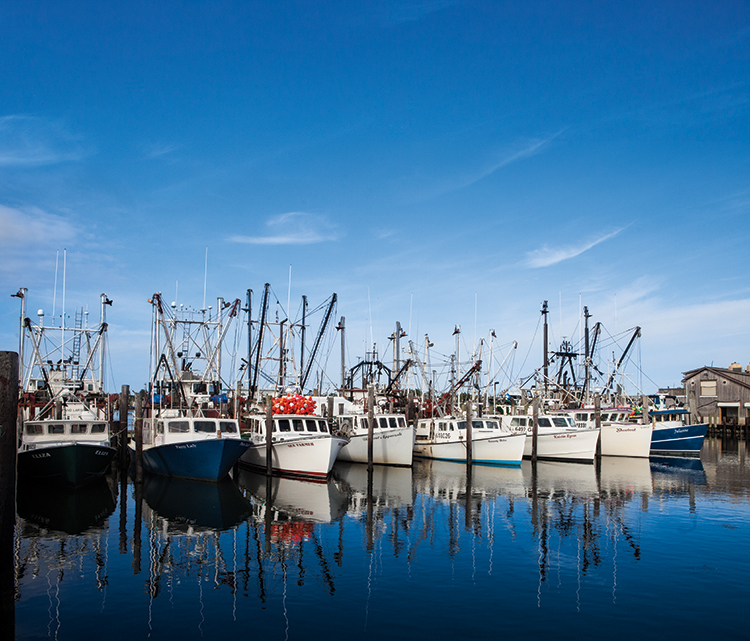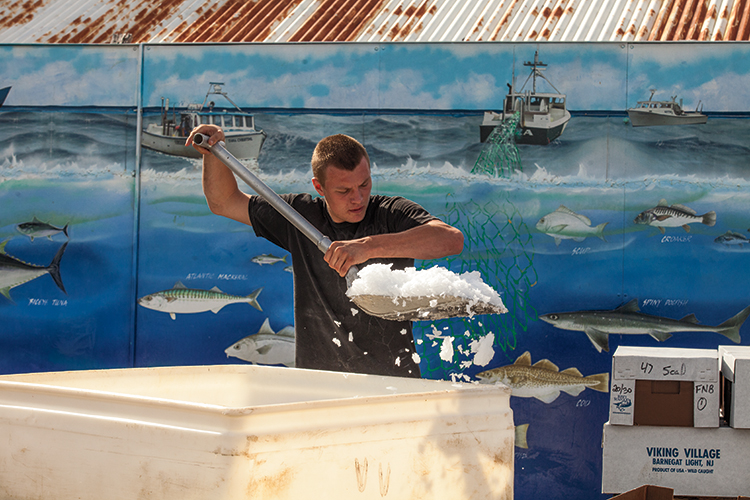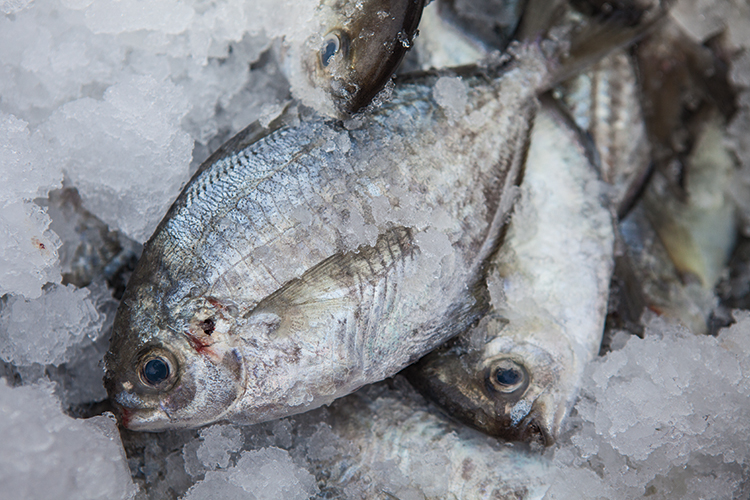Home > New Jersey > New Jersey Crops & Livestock > New Jersey Seafood Industry Boosts Economy
New Jersey Seafood Industry Boosts Economy

New Jersey is bountifully blessed with a nationally recognized seafood industry whose heritage is marked by ingenuity, hard work and investment. Third- generation fishermen are the heart of the state’s commercial fishing fleet, which landed 176 million pounds of fish and shellfish in 2011, according to Garden State Seafood Association Executive Director Gregory DiDomenico.
“New Jersey, along with other states managed by the Mid-Atlantic Fisheries Management Council, is one of the national leaders in sustainably managed seafood,” DiDomenico says. “Despite being in a highly regulated industry, our fishermen’s formula is to work with great cost efficiency, innovation and be as technically sharp as possible. We’re providing some of the most nutritious, high-quality protein that exists without overfishing.”
Fishing Nets Economic Value
The state’s seafood industry generated an estimated $1 billion of economic activity in 2011. Five major commercial fishing ports border New Jersey’s coastline: Belford, Point Pleasant, Barnegat Light, Atlantic City and Cape May.
A smaller number of ports are located on Delaware, Barnegat and Raritan Bays. Cape May is the second largest port on the East Coast and fifth largest in the nation.
“With the exception of Atlantic City, each port supports a number of inshore and offshore fisheries,” DiDomenico says. “The Atlantic City fleet is exclusively dedicated to the surf clam/ocean quahog fishery. Surf clams – New Jersey has the largest such industry in the U.S. – are frequently used in processed products such as chowders, sauces, dips and breaded clam strips like you find at Howard Johnson’s.
“Belford, with its ready highway access, can deliver its silver and red hake, fluke, flounder, sea bass and porgies to New York within an hour of harvest. Point Pleasant’s boats fish primarily local waters reaping sought-after scallops and fin fish, including fluke, whiting and scup. New Jersey ranks second nationally in scallop harvesting.”

DiDomenico highlighted Barnegat Light as the home port of many boats in the East Coast’s pelagic longline fleet, which targets tuna and swordfish, as well as day-trip gillnetters and scallopers. And Cape May/Wildwood is the epicenter of fish processing and freezing in New Jersey.
“New Jersey’s transportation infrastructure is vital to our catches arriving locally very fresh and to competing worldwide,” DiDomenico says. “Restaurants waiting for fresh seafood to serve that day to the clam products coming from our fisheries and sold on every shelf in the mid-Atlantic, can be grateful to our state’s highway systems.”
Each boat is an individual business, Gef Flimlin, Rutgers Cooperative Extension marine extension agent, says.
“The economic value of the seafood does not exist until it’s over the side of the boat. It creates money and sustains jobs. From the guy fixing the diesel boat engine to the boat suppliers, the crew and captains take care of their families through the industry.”

Seafood Appreciated Locally
Consumers seeking to feed their families with nutritious, locally produced seafood need only look for the “Jersey Seafood” logo on packages or visit www.JerseySeafood.nj.gov. The brand is modeled after the state’s successful “Jersey Fresh” produce branding program. New Jersey-based aquatic farmers, commercial seafood harvesters, and packers and processors can become licensed to market their high-quality products using the logo.
“Buying a domestic product means you’re environmentally conscious and you’re supporting the local economy. Even if the cost is a little more than the 80 percent imported seafood to this country, you know what you’re buying and it’s worth it.”



